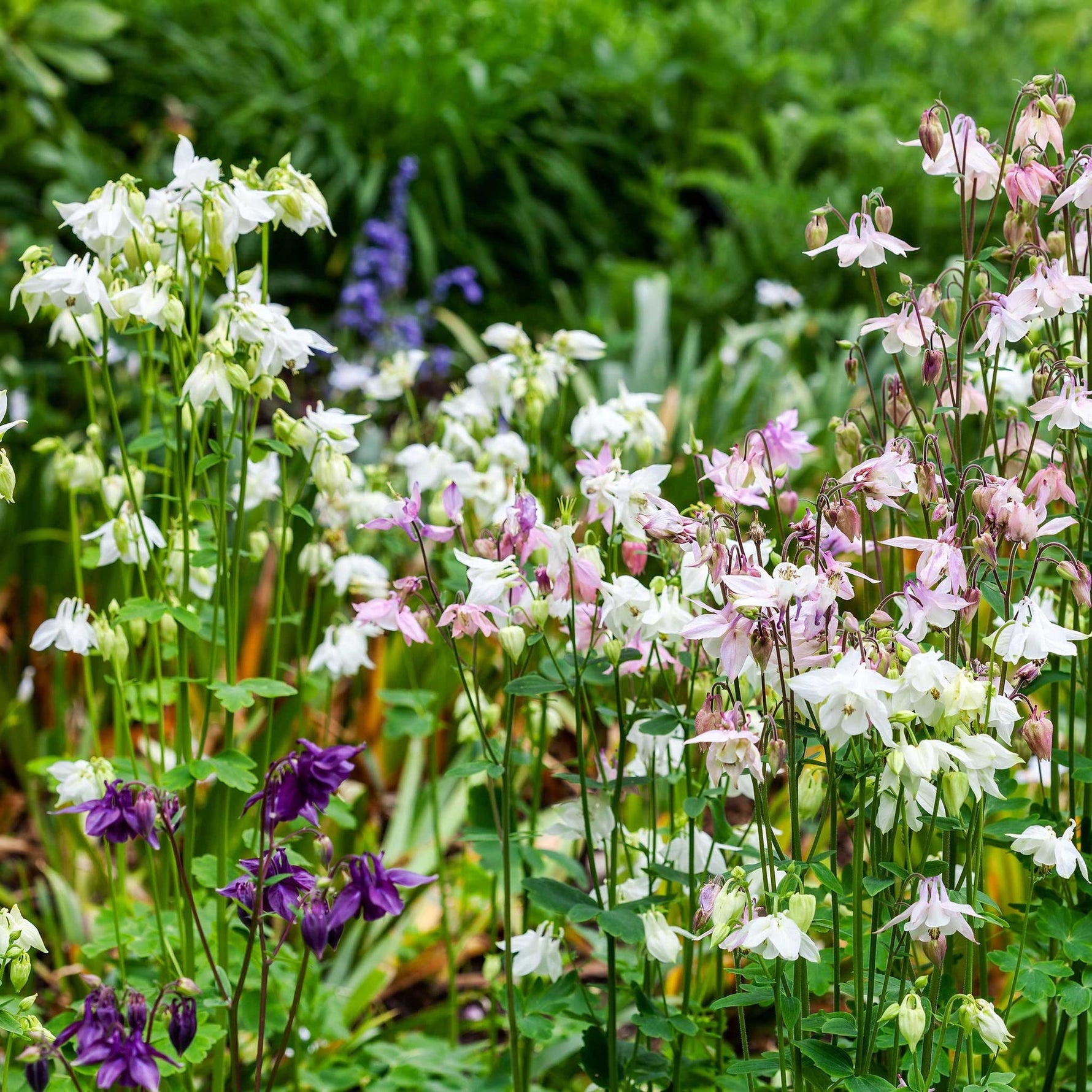
Dharaseeds
Dwarf / European Columbine Seeds
Estimated delivery between April 15 and April 18.
Dwarf / European Columbine Seeds are a charming and compact variety of the beloved Columbine flower, perfect for smaller gardens or containers. Known for their unique, spurred flowers and diverse color range, these plants bring a touch of elegance and grace to any space. With their manageable size and vibrant blooms, Dwarf Columbines are a great option for those who want the beauty of traditional Columbines in a more compact form.
Key Benefits
- Compact Growth: The dwarf variety of European Columbine stays small and is ideal for small gardens, borders, or containers.
- Vibrant Flowers: Dwarf Columbines come in a variety of colors, including shades of blue, purple, red, and white, bringing a rainbow of hues to your garden.
- Attracts Pollinators: Like all Columbines, these plants attract bees, butterflies, and hummingbirds, adding to your garden's biodiversity.
- Long Blooming Season: Enjoy an extended blooming period, with flowers appearing in late spring and continuing into early summer.
- Hardy Perennial: As a perennial, Dwarf Columbines return year after year, providing enduring beauty with minimal care.
Variety Features
- Plant Characteristics: Compact, bushy plants with multiple spurred flowers that sit atop slender, upright stems.
- Flower Color: The flowers can range in color from soft pastels to vibrant hues, including purple, red, white, and yellow.
- Growth Habit: Dwarf Columbines grow to a height of 8–12 inches, making them perfect for container gardening or smaller garden spaces.
- Size: The flowers typically measure about 1–2 inches in diameter, maintaining a delicate yet eye-catching appearance.
Planting Instructions
Planting Season
- Plant Dwarf Columbine seeds in early spring, once the danger of frost has passed, or in the fall for natural stratification.
Planting Details
- Seed Depth: Plant seeds about 1/8 inch deep in the soil, pressing them lightly for good seed-to-soil contact.
- Spacing: Space the plants 6–10 inches apart, giving them room to spread while maintaining their compact growth.
- Soil Requirements: Dwarf Columbines prefer well-drained, fertile soil with a slightly acidic to neutral pH (6.0–7.0).
- Sunlight: While they can tolerate full sun, these plants prefer partial shade, especially in hotter climates. Ideal for shaded borders, woodland gardens, or along the edges of larger plants.
Care Instructions
Watering
- Keep the soil consistently moist, especially during the early stages of growth. Once established, Dwarf Columbines are fairly drought-tolerant but benefit from occasional watering during dry spells.
- Ensure the soil has good drainage to avoid waterlogging, which can lead to root rot.
Fertilization
- Apply a balanced, slow-release fertilizer in early spring to encourage healthy growth. Avoid over-fertilizing, as this can lead to weak stems and fewer blooms.
- Too much nitrogen can result in lush foliage at the expense of flowers, so a balanced fertilizer is best.
Weeding and Mulching
- Regular weeding is important to prevent competition for nutrients, but be careful not to disturb the shallow roots of the plants.
- Mulch around the base to retain moisture, suppress weeds, and keep the roots cool, especially during hot summers.
Pest and Disease Control
Pests
- Dwarf Columbines are generally pest-resistant but may occasionally suffer from aphids, spider mites, or slugs. Use insecticidal soap or neem oil to treat infestations.
- Slugs and snails can be controlled with slug bait or diatomaceous earth.
Diseases
- Like many Columbine varieties, Dwarf Columbines can be susceptible to fungal diseases such as powdery mildew. To reduce this risk, ensure proper spacing for good air circulation and avoid overhead watering.
- Rotating crops and cleaning up fallen foliage in the fall can help minimize disease buildup.
Harvesting
Maturity
- Dwarf Columbines typically flower in late spring to early summer, depending on growing conditions.
Seed Harvesting
- Allow the flowers to mature and the seed pods to dry on the plant. Once the pods are dry, collect the seeds and store them for future planting.
Storage
Short-Term
- Store seeds in an airtight container in a cool, dry place for up to one year.
Long-Term
- For extended storage, keep seeds in a sealed envelope or container in a cool, dark location to maintain their viability.
Culinary Uses
- Non-Culinary: While beautiful, Columbine flowers are not typically used in cooking due to their toxic properties. They are primarily ornamental.
Conclusion
Dwarf / European Columbine Seeds are an excellent choice for gardeners with limited space or those looking to add a splash of color to containers or small garden beds. With their compact size, vibrant flowers, and pollinator-friendly qualities, these plants are sure to enhance any garden. Easy to grow and maintain, Dwarf Columbines are a perfect option for both beginner and seasoned gardeners looking to add a touch of elegance and charm to their outdoor spaces.










